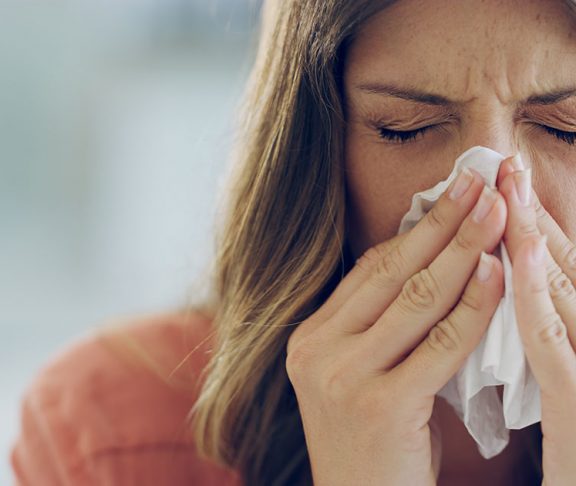While the flu and the novel coronavirus are very different illnesses, the symptoms are often the same and so are the prevention measures.
It starts with a mild sore throat and some sniffles. Must be allergies, right? But later you feel shortness of breath as you walk up the stairs and notice that you are developing a cough and slight chills.
If it’s not allergies, is it the flu? Or could it be COVID-19?
Symptoms of allergies, flu, and COVID-19 have some similarities and key differences. Cough and shortness of breath can occur in all three, while fever is common for the flu and COVID-19, but not allergies. So how can you tell the difference?
The hallmarks of allergy symptoms include an itchy, runny nose, sneezing, coughing, and red, watery eyes, as well as sensitive skin or hives in some patients.
It’s harder to tell the difference between the flu and COVID-19.
Along with a fever, cough, and shortness of breath, the flu and COVID-19 symptoms may involve chills, sore throat, muscle or body aches, headache, and fatigue. Flu viruses can cause mild to severe illness, while COVID-19 seems to cause more serious illnesses in some people. COVID-19 may involve nausea, vomiting, or diarrhea and patients often experience a loss of taste or smell during the illness.
The Centers for Disease Control (CDC) has offered some guidance on what to do if you think you may be sick with COVID-19, which happens to be very similar to what you should do if you’re sick with the flu. That means that even if you can’t tell where your symptoms are coming from, your next steps will be the same.
First, call your doctor to get advice on whether you should get a test to decide what exactly is causing your symptoms and to see if you should take an antiviral medication for treatment.
You should also take everyday precautions while you are sick. Limit contact with others to prevent spreading your illness, cover your coughs and sneezes, and wash your hands frequently. If soap and water aren’t available, use a hand sanitizer with at least 60 percent alcohol. Perhaps most importantly, stay home until you are better.
There is one major difference, however. And that is while we don’t yet have a widely available vaccine for COVID-19, you can get a flu vaccine today at a doctor’s office or local pharmacy. Getting a flu vaccine is an essential part of protecting your health and your family’s health this season.
Some worry the pandemic could lead to a really rough flu season this year. But on the other hand, taking precautions to prevent the spread of COVID-19 could also help prevent the spread of influenza. It turns out that by keeping yourself safe and healthy, you can fight two viruses with one stone.



